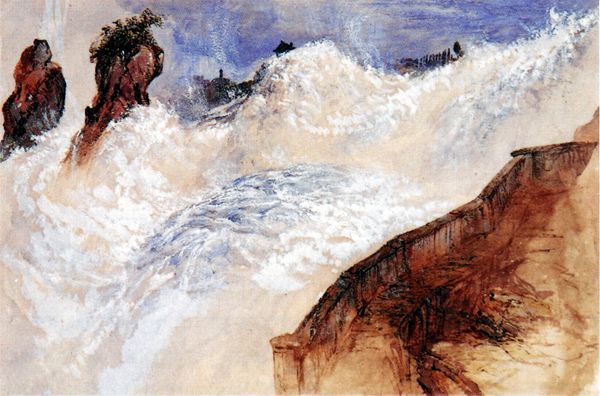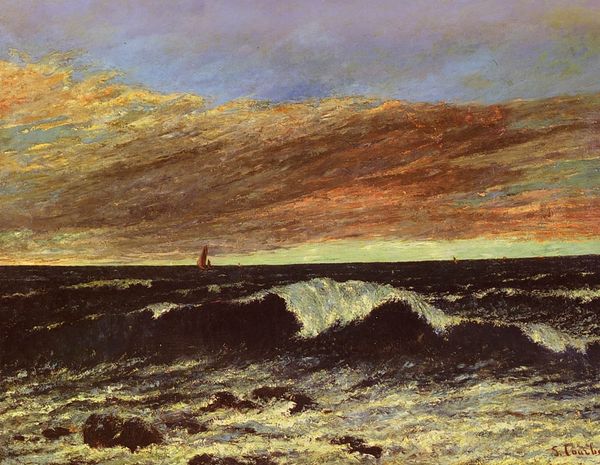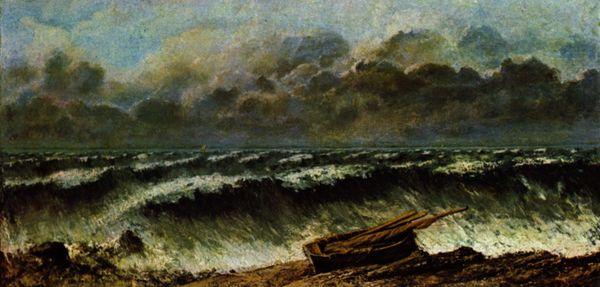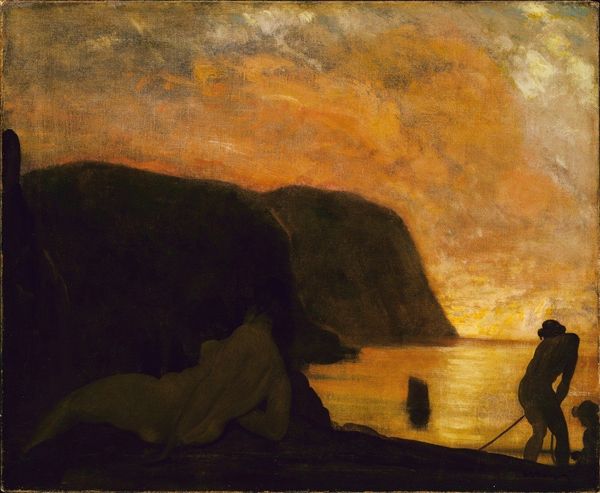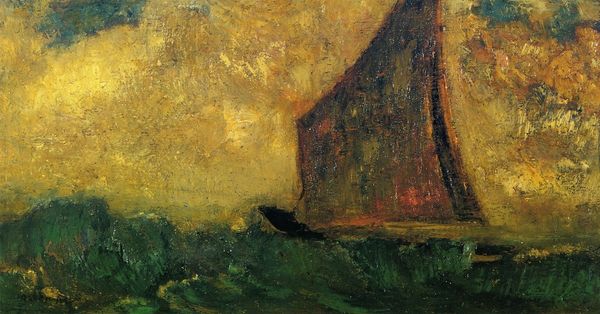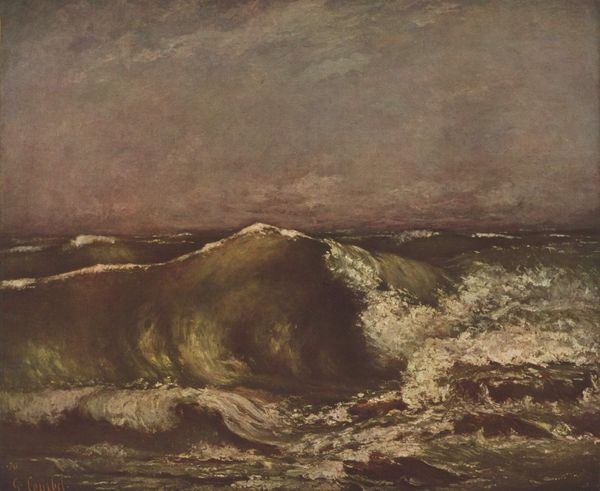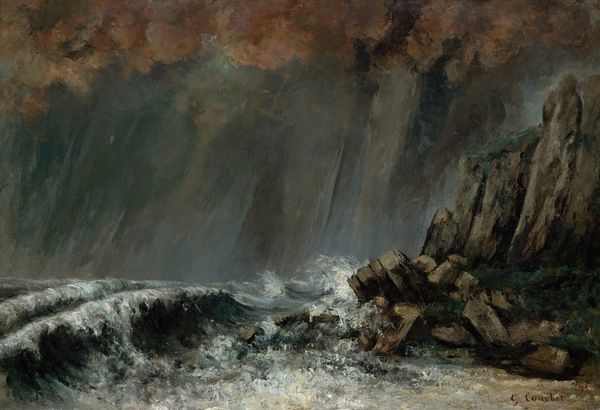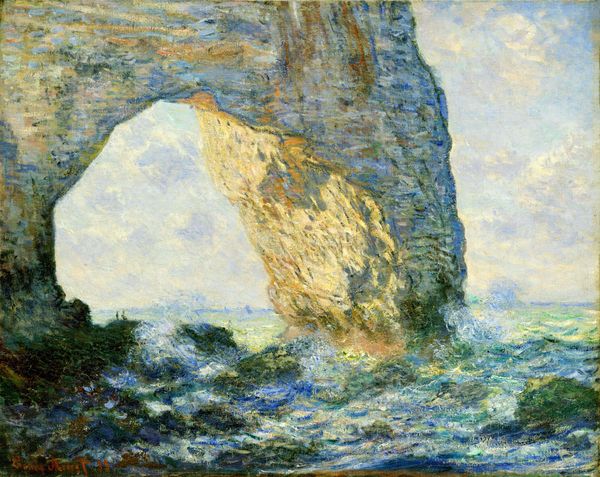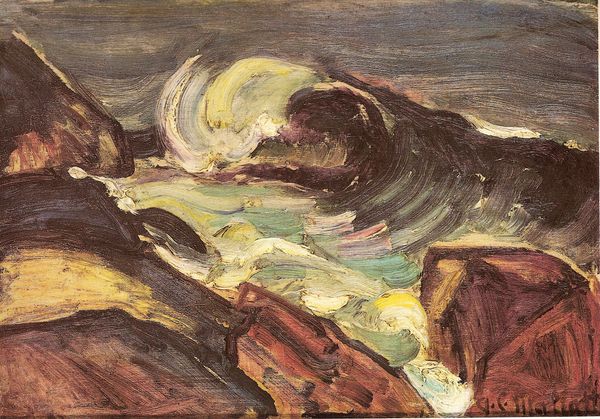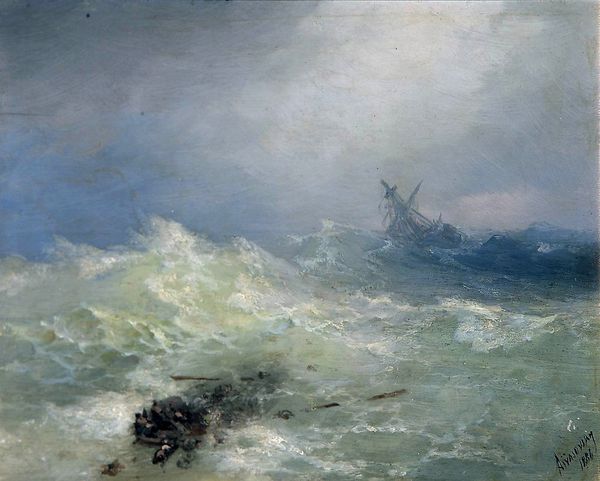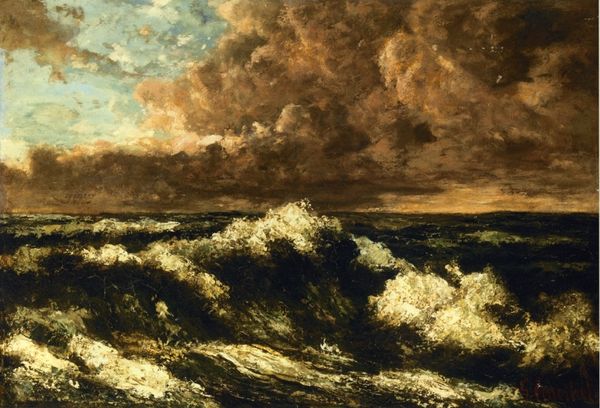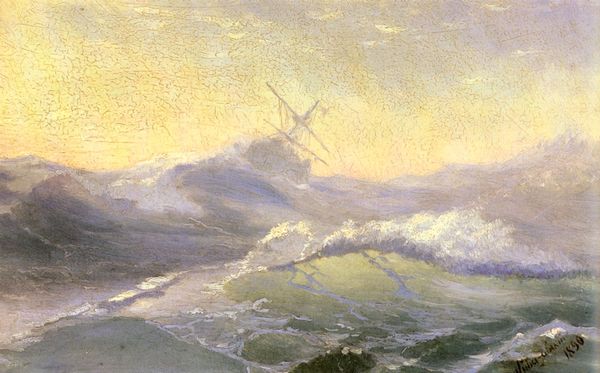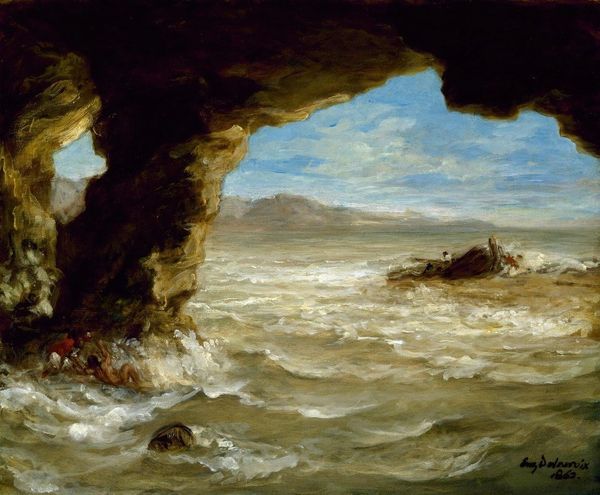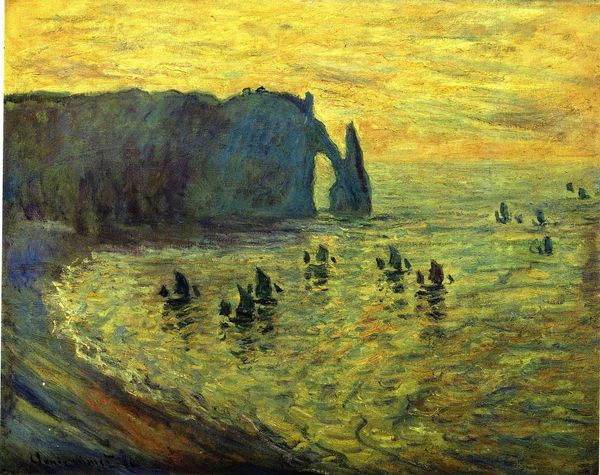
painting, plein-air, oil-paint
#
sky
#
cliff
#
painting
#
impressionism
#
plein-air
#
oil-paint
#
landscape
#
impressionist landscape
#
oil painting
#
rock
#
cityscape
Copyright: Public domain
Curator: My initial reaction to this is… elemental. Almost apocalyptic, wouldn't you say? Editor: That's an interesting read. I see more of a reflection of the times. Monet painted this turbulent seascape, "Mer agitée à Étretat," in 1883, capturing a moment on the Normandy coast. It’s a fascinating lens through which to consider French identity, clinging to the coast, during a period of immense social and political change. Curator: I get that, but the way the light whips across the water, the raw power of nature… it feels almost untamed, regardless of socio-political conditions. Did he use plein-air here? I'm curious about his methodology. Editor: Yes, it’s definitely painted en plein air, that direct engagement with nature that defined so much of Impressionism. Considering it, that engagement became a political act. I read his impasto-heavy brushstrokes, the sheer density of the paint itself, as a confrontation of industrialization, with nature hitting back hard! Curator: That's compelling, I like that reading! Though, perhaps, the "hitting back" narrative isn’t quite it. For me it's more an acknowledgement, maybe even a humble bow to something greater, timeless… it's quite a profound visual statement on our relative insignificance, wouldn't you agree? Editor: Insignificance, maybe, or maybe interdependence? Consider the figures down there at the lower center of the painting near the boats – the working people rendered so tiny – their survival bound up with the sea’s moods and resources. Think about that tension inherent to living on the coasts as opposed to inland, then think about colonialism. Curator: Well, that's certainly one way to look at it! I'll admit it carries less doomsday, a softer angle when framed within the social context that interests you most, in intersectional history and modern theory, you know. I think there is room for both interpretations. It’s a stunningly layered piece, really. Editor: Indeed. This is what art does best—holding space for multiple truths to exist at once. Curator: And showing the way to seeing beyond your usual viewing, I am glad you challenged mine. Thank you!
Comments
No comments
Be the first to comment and join the conversation on the ultimate creative platform.
